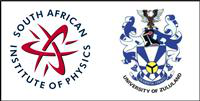Speaker
Apply to be<br> considered for a student <br> award (Yes / No)?
Yes
Level for award<br> (Hons, MSc, <br> PhD)?
MSc
Abstract content <br> (Max 300 words)
Heavy mineral sands are mined along our West Coast to produce, amongst others, titanium dioxide feedstock, zircon, rutile and high purity iron products. These products are used in applications including metal, ceramics and foundry production. The mined sands have relatively high levels of NORM (naturally occurring radioactive material). During the process of extracting minerals from the sands, tailings rich in TENORM (Technologically enhances NORM) are generated. Such mining operation therefore requires the on-site monitoring of ionizing radiation and the estimation of doses to critical groups.
Here we present our first results from a radiometric survey at the heavy minerals separation plant. The survey was conducted using two in-situ measurement systems, namely a hand-held gamma-ray detector (RS-230 Super-SPEC using a bismuth germinate scintillator) and a MEDUSA (Multi-Element Detector for Underwater Sediment Activity) system (using a cesium iodide scintillator). Each system is linked to a GPS device to allow spatial radiometric mapping. We present a comparison of results from the two systems and results from a laboratory-based radiometric analysis of tailings samples.
Would you like to <br> submit a short paper <br> for the Conference <br> Proceedings (Yes / No)?
no
Main supervisor (name and email)<br>and his / her institution
Dr. N.M. Jacobs (noel@ma2.sun.ac.za)
Military Academy, Faculty of Military Science, Stellenbosch University

